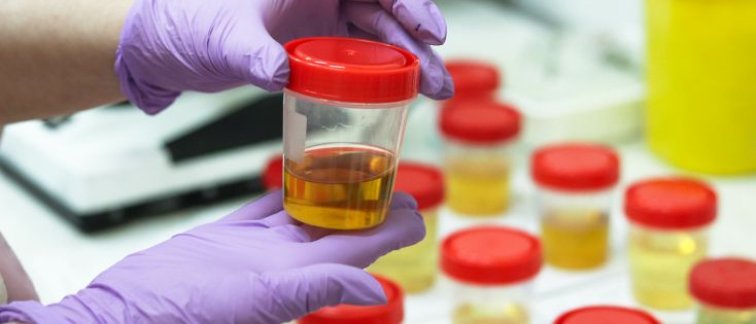When people have a brain tumor removed, the likelihood of it returning can be high, so they are monitored with an MRI scan every three months, which is followed by biopsy. For patients the three-month scan becomes a focal point for worry. MRIs are not invasive or expensive, but they do require a trip to the hospital, and the 3-month gap between checks can be a regular source of anxiety for patients.
Blood tests for detecting different cancer types are a major focus of research for teams across the world, and there are some in use in the clinic. These tests are mainly based on finding mutated DNA, shed by tumor cells when they die, known as cell-free DNA (cfDNA). When healthy or tumor cells die, they release fragments of DNA into which can be detected not only in the blood, but other bodily fluids, such as urine. Researchers can use cfDNA as a marker to indicate that a tumor is present, and it can also be used to provide information on the genetic mutations within a patient’s tumor.
Detecting brain tumor cfDNA in the blood has historically been difficult because of the blood-brain-barrier, which separates blood from the cerebrospinal fluid (CSF) that surrounds the brain and spinal cord, preventing the passage of cells and other particles, such as cfDNA.
Researchers have previously looked at detecting cfDNA in CSF, but the spinal taps needed to obtain it can be dangerous for people with brain tumors so are not appropriate for patient monitoring.
Scientists have known that cfDNA with similar mutations to the original tumor can be found in blood and other bodily fluids such as urine in very low levels, but the challenge has been developing a test sensitive enough to detect these specific mutations.
The first approach works for patients who have previously had glioma removed and biopsied. The team designed a test that was able to look for the mutations found in the tumor tissue within the cfDNA in the patient's urine, CSF, and blood plasma.
A total of 8 patients who had suspected brain tumors based on MRIs were included in this part of the study. Samples were taken at their initial brain tumor biopsies, alongside CSF, blood and urine samples.
By knowing where in the DNA strand to look, the researchers found that it was possible to find mutations even in the tiny amounts of cfDNA found in the blood plasma and urine.
The test was able to detect cfDNA in 7 out of8 CSF samples, 10 out of the12 plasma blood samples and 10 out of the 16 urine samples.
For the second approach the researchers looked for other patterns in the cfDNA that could also indicate the presence of a tumor, without having to identify the mutations. Why didn’t you do this straight away? What are the benefits of each test respectively
They analysed 35 samples from glioma patients, 27 people with non-malignant brain disorders, and 26 healthy people. They used whole genome sequencing, where all the cfDNA of the tumor is analysed, not just the mutations.
They found that fragments of cfDNA, which came from patients with brain tumours were different sizes than those from patients with no tumours in CSF, blood plasma and urine sample. They then fed this data into a machine learning algorithm which was able to successfully differentiate between the urine samples of people with and without glioma.
The researchers suggest that in the future, one of these approaches could form an inexpensive test which could be taken at a GP surgery and could be used to monitor patients at high risk of glioma or people who have had glioma in the past and are in remission. These patients are currently monitored with MRI scans every three months. Which test do you want to take forward? Why that one? Does each test have different benefits? Was the first test kind of a precursor to the second one?
The next stage of this research will see the team comparing both tests against MRI scans in a trial with patients with brain tumors who are in remission to see if it can detect if their tumors are coming back at the same time or earlier than the MRI.
Does the test need to be developed into a device? What roughly would the timeline look like eg. 5 years or 10 years. Although this research is in its early stages, it could in the future lead to the MRI being complemented by a more frequent urine test given by doctors, which could detect a returning glioma earlier and improve patient outcomes.
Source text Cancer Research UK, CRUK

